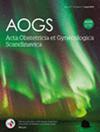Exposure to potentially teratogenic medications before and during the first trimester of pregnancy compared to women of childbearing age: A retrospective analysis of Swiss claims data (2015–2021)
Abstract
Introduction
Exposure to potentially teratogenic medications during pregnancy is underinvestigated in Switzerland. We aimed to assess exposure to potential teratogens preconceptionally, during the first trimester, and in women of childbearing age, and specifically explore the effectiveness of the valproate pregnancy prevention program (2018).
Material and Methods
Retrospective study using the Swiss Helsana claims database. In a pregnancy cohort (2015–2021) and a cohort of women of childbearing age (2021 and 2018), we defined three 90-day time periods: (1) first trimester, (2) preconceptional period (days 180–90 before pregnancy), and (3) January 01, 2021, and March 31, 2021 (women of childbearing age). During all periods, we quantified the exposure prevalence to at least one dispensed weak, proven, and unequivocally potent teratogen overall and by age strata. We quantified the exposure prevalence to each individual teratogen, and to valproate during pregnancy by calendar year to compare its use before and after the introduction of a pregnancy prevention program (2018). We investigated the use of systemic retinoids particularly isotretinoin in women of childbearing age.
Results
Of 34 584 pregnant women, 1.4% were exposed to potential teratogens during the first trimester (weak: 1.3%, proven: 0.06%, unequivocally potent: 0.04%). During the preconceptional period, 2.9% were exposed to any teratogen compared to 4.7% of women of childbearing age (Ntotal = 95 059). Systemic glucocorticoids were the most prevalent weak teratogens during all time periods (75% of all claimed teratogens during the first trimester). In the first trimester, the antibiotic cotrimoxazole and the thyreostatic thiamazole (weak teratogens), ranked second and third, followed by the antiseizure medications carbamazepine and topiramate (proven teratogens). Among women of childbearing age, exposure to weak and proven teratogens increased with age, whereas exposure to unequivocally potent teratogens decreased with age. This was due to 2.3% of women <26 years who claimed systemic isotretinoin. Valproate use during pregnancy decreased after the introduction of a pregnancy prevention program (2.39/10 000 pregnancies [2015–2018] vs. 0.93/10 000 pregnancies [2019–2021]).
Conclusions
Most medications with potential teratogenic effects dispensed to women of childbearing age and pregnant women were in the group of weak teratogenicity level, and many women discontinued treatment before pregnancy. Preliminary evidence suggests the valproate pregnancy prevention program in Switzerland may be beneficial.


 求助内容:
求助内容: 应助结果提醒方式:
应助结果提醒方式:


